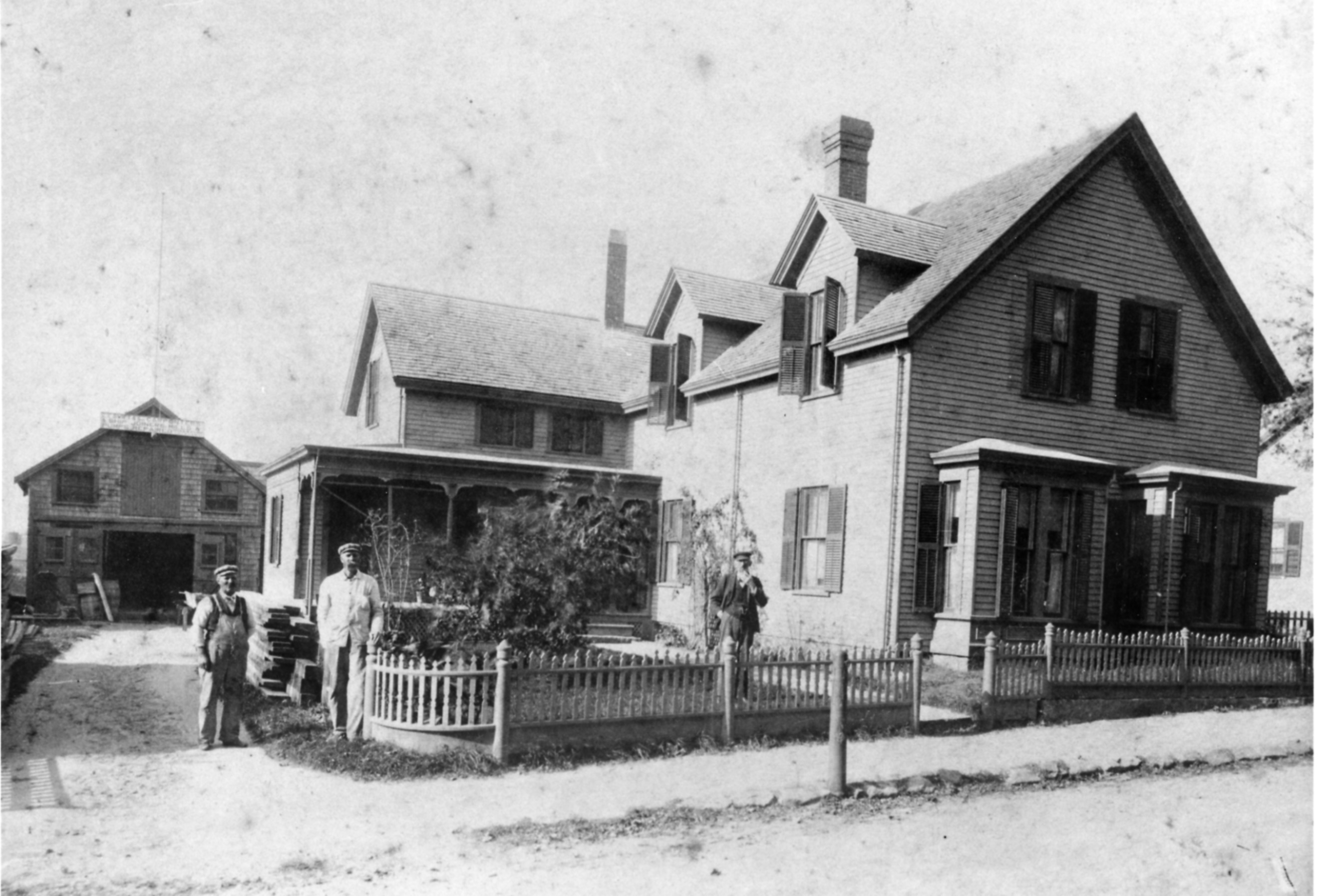- Introduction
- Early Years
- Fishing and Whaling
- The Guano Company
- The Fish Market
- Stores and Markets
- Drug Stores
- Garages and Parking Lots
- Coal
- Restaurants, Ice Cream Parlors, Bars
- Tea Rooms
- Hotels and Boarding Houses
- The Breakwater Hotel
- --------
- Walter Luscombe, Entrepreneur
- Franklin Gifford, Painter
- Michael Walsh, Gardener
- Barbers
- Blacksmiths
- Carpenters
- --------
- About
Carpenters

There was a lot of new building construction in the 1870s and 1880s in Woods Hole. New commercial buildings, a reconstruction of the 1870s Woods Hole School in 1886, big Victorian and Shingle-style summer homes for whaling captains such as Eliel T. Fish, homes for businessmen who were involved in the Pacific Guano Company (such as John Glidden), big houses for sons of businessmen such as Azariah Crowell as well as the Joseph Story Fay sons H.H. Fay and J.S. Fay Jr.
One of the largest buildings was the U.S. Fish Commission Residence and Aquarium at the end of Main/Water Streets, built in 1884 by E. E. Swift.
On the 1887 Bird’s Eye view of Woods Hole there are a number of carpenters listed: C.H. Burdick and J.W. Bowles. For some reason E.E. Swift is not listed. Their “day book”, an account book with a list of all daily activities and work begins in 1884.
Eddie Swift, son of Ezekiel E. Swift, ran a hardware and marine supply business in the old barn of his father’s home complex. Young folks unused to the ways of Woods Hole would find dealing with Eddie an unusual encounter with an older eccentric native.
Brahm Norton (also called Braman and Brayman) was born in Chilmark, Martha’s Vineyard in 1860. He married Thankful Wainwright, daughter of Tarpaulin Cove lighthouse keeper, Peter Wainwright. Brahm and his wife lived at 8 Millfield Street, originally owned by Thankful’s parents. He was a very active carpenter in Woods Hole, building many small houses. He and John Sylvia built boats together and his boat building/carpenter shed was eventually moved from the north corner of Eel Pond farther down Millfield Street where it eventually became part of the Clark family complex (46 Millfield Street). Brahm was still an active carpenter in the 1930s. He built the Hall School in Falmouth and St. Anthony’s Parish House in East Falmouth.
John Bowles built a shop along the shore of Great Harbor across from the whaling era buildings and the MBL. He built many late “Victorian”-style houses in Woods Hole, especially on Crow Hill (High Street and surrounding area). His building was later owned and used by carpenter Sidney Peck.
Sidney Peck bought John Bowles’ shop. Peck worked on many small houses in the 1920s and 1930s. He also worked on “Gladheim” (the Warbasse house at the end of Penzance), the Janney estate house on Gansett and the Newcomb Carlton house at 80 Church Street, which was made by adding onto the 1870s Glidden stone water tower.

Eddie Swift. The carpenter shop shown in this photo and the one below still stands as does the house.

